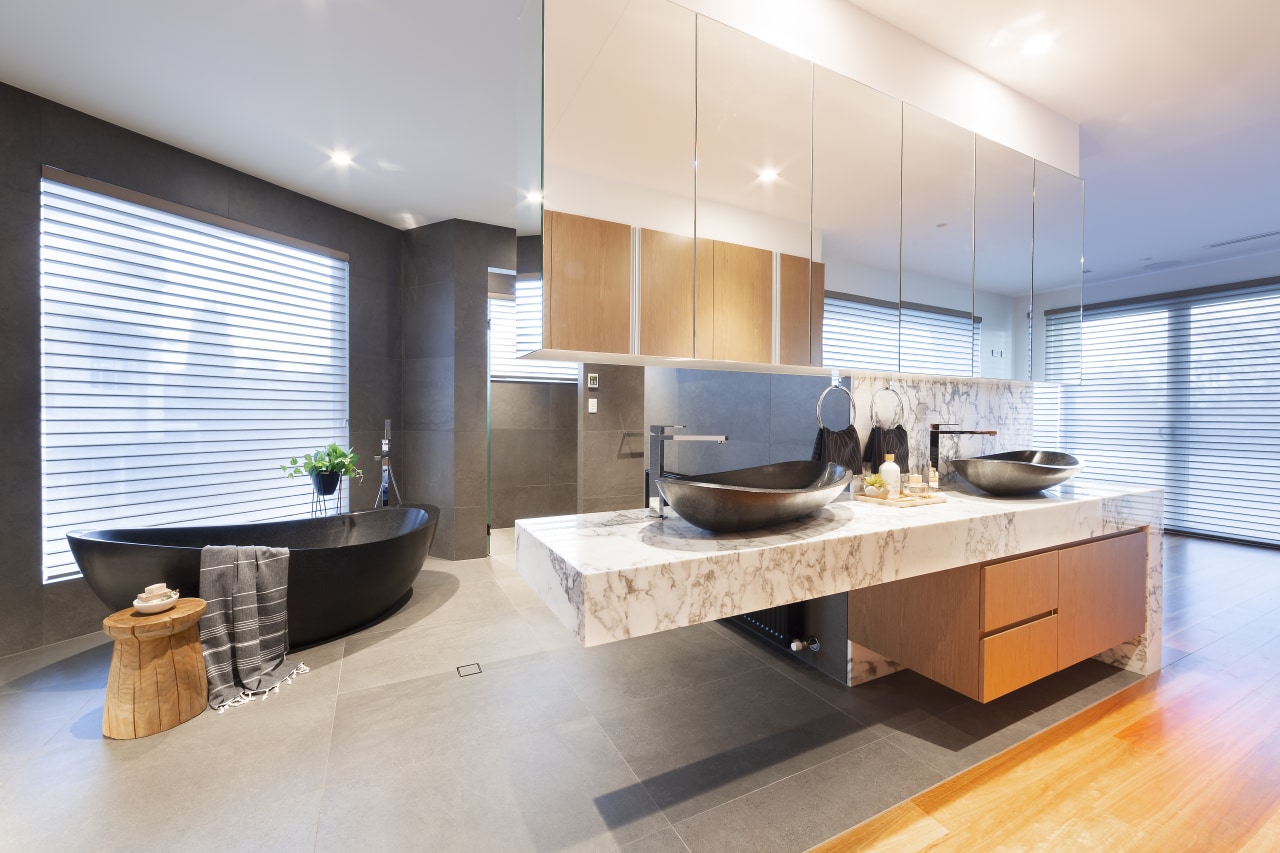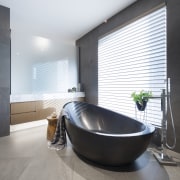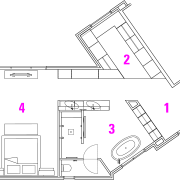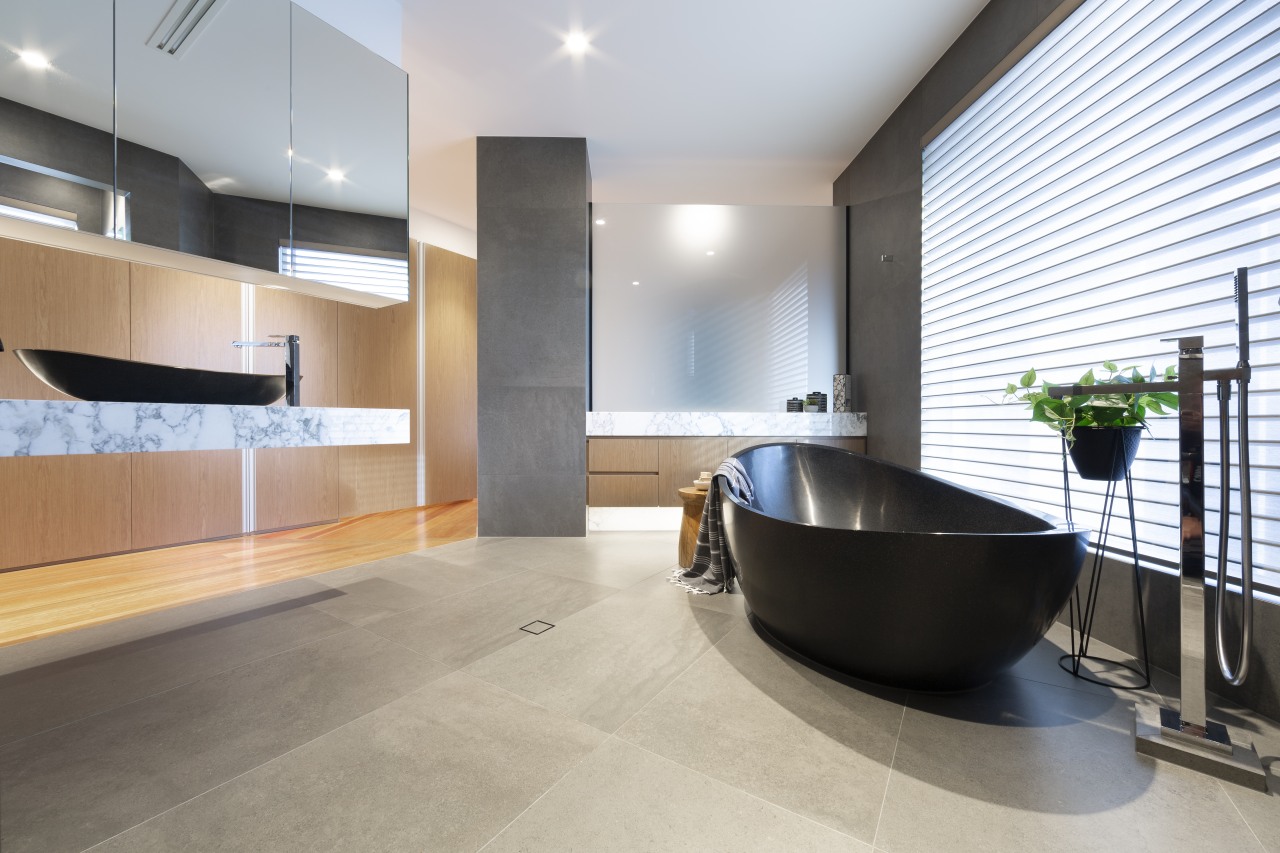Cantilevered elements play major role in establishing openness and flow in large master ensuite
Put on hold for over six years, the plan for this master suite needed only a tweak of finishes when it finally came to fruition

With so many different surfaces, fittings and functional requirements, it’s not surprising that a new bathroom often comes with a hefty price tag. So what will ensure that a bathroom isn’t going to date and need an overhaul in just a few short years?
Interior designer Sonja McAuliffe had an unusual way of gauging that when interiors she designed for a striking new home went on hold for over six years.
When the project restarted, she realised that the master suite plan she had originally drawn up was just as appropriate at that stage as when she first developed it.
“Designed by DNA Architects, the house was very architecturally dynamic, with lots of angles, open space and cantilevered elements,” says McAuliffe.
“That can be challenging for the interiors, but also interesting because you can create different shapes for different areas.”
Her early involvement in the project meant she could make adjustments to walls and plumbing to get a better result.
“For the master, I was able to create the feeling of walking into a five star luxury hotel suite, with an entry foyer that screens off the rest of the space.”
Beyond that is the ensuite area with cantilevered marble vanity top and overhead mirrored cabinets, supported by substantial structural steel in the wall behind, the ceiling and the waterfall edge of the vanity
Careful positioning of the bath, shower and toilet ensure that each has the required degree of privacy, while still retaining a sense of openness within the large space.
“The toilet cubicle has a translucent glass door to give it plenty of light. The shower doesn’t have a door – allowing easy maintenance – but it’s tucked out of sight from the rest of the space.”
Running alongside the vanity, a bank of full height timber cabinetry leads the eye down to the bedroom. But not all the cabinets doors open to shelving and drawer storage – two of them are secret doors to a walk-in robe.
“This was originally a void in the plan, but incorporating it into the suite provides even more storage and, because it includes a window, it’s a light-filled dressing area.”
While McAuliffe’s plan for the suite remained intact, she did adjust some of the finishes she had originally specified.
“The owner wanted natural materials and we selected Arabescato marble for the vanity top. It’s predominantly white but with veining that includes greys, black, putty and warm rusting tones. So the rest of the colours came from this,” she says.
These include the large format grey tiles used throughout the ensuite on the walls and floor, the black Apaiser basins and freestanding bath, and the warm timber of the vanity and cabinetry.
“Using natural stone and a simple natural colour palette will help the bathroom stand the test of time. It’s a very sculptural, dynamic and creative bathroom which I think will still look really good in five to ten years time.
“We can get caught up in trends and want to use all the amazing things we see. But we also need to think about how long they will last.”
Credit list
Architect
Builder
Vanity
Bath and basins
Lighting
Blinds
Bathroom designer
Cabinet company
Countertop
Faucets and shower fittings
Toilet
Accessories
Awards
Story by: Paul Taylor
Photography by: Hcreations Photography
Home kitchen bathroom commercial design















